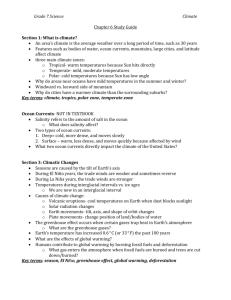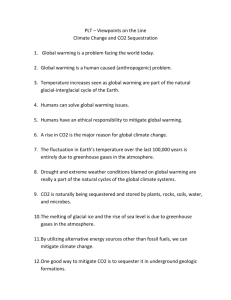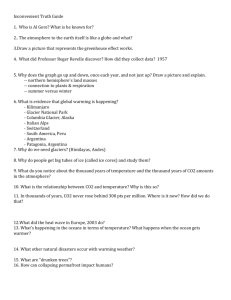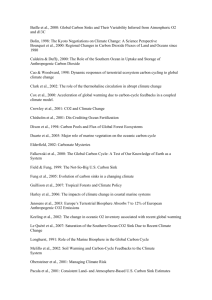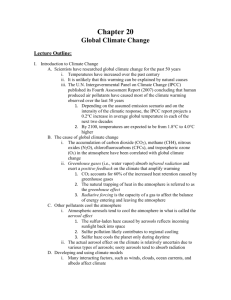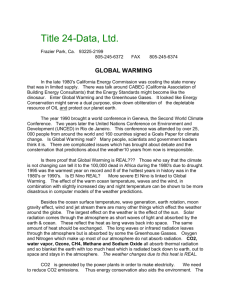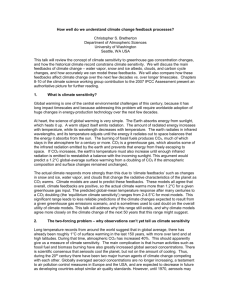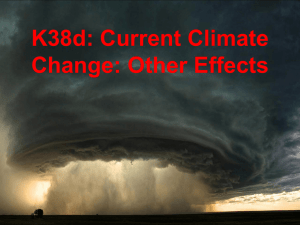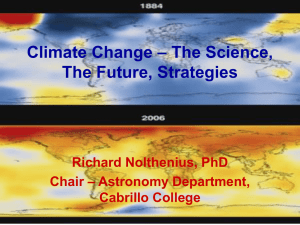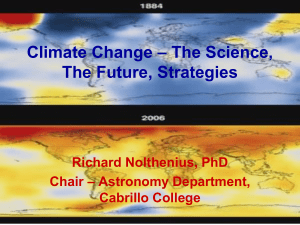CON Human Causation The 20th century warming of 1
advertisement
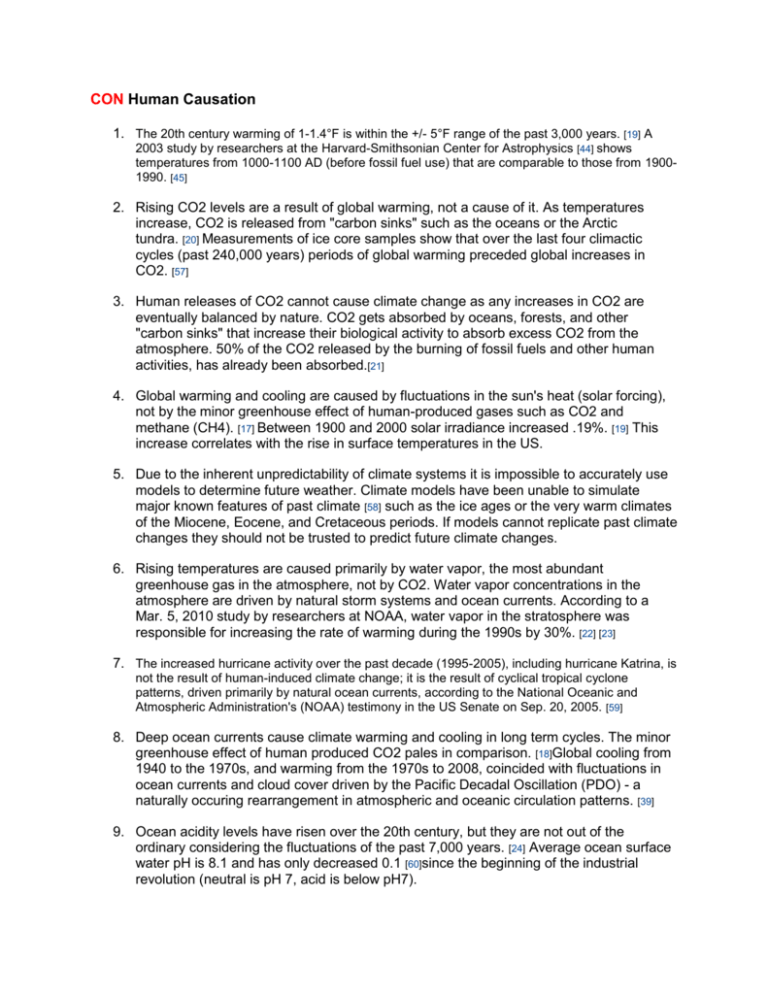
CON Human Causation 1. The 20th century warming of 1-1.4°F is within the +/- 5°F range of the past 3,000 years. [19] A 2003 study by researchers at the Harvard-Smithsonian Center for Astrophysics [44] shows temperatures from 1000-1100 AD (before fossil fuel use) that are comparable to those from 19001990. [45] 2. Rising CO2 levels are a result of global warming, not a cause of it. As temperatures increase, CO2 is released from "carbon sinks" such as the oceans or the Arctic tundra. [20] Measurements of ice core samples show that over the last four climactic cycles (past 240,000 years) periods of global warming preceded global increases in CO2. [57] 3. Human releases of CO2 cannot cause climate change as any increases in CO2 are eventually balanced by nature. CO2 gets absorbed by oceans, forests, and other "carbon sinks" that increase their biological activity to absorb excess CO2 from the atmosphere. 50% of the CO2 released by the burning of fossil fuels and other human activities, has already been absorbed.[21] 4. Global warming and cooling are caused by fluctuations in the sun's heat (solar forcing), not by the minor greenhouse effect of human-produced gases such as CO2 and methane (CH4). [17] Between 1900 and 2000 solar irradiance increased .19%. [19] This increase correlates with the rise in surface temperatures in the US. 5. Due to the inherent unpredictability of climate systems it is impossible to accurately use models to determine future weather. Climate models have been unable to simulate major known features of past climate [58] such as the ice ages or the very warm climates of the Miocene, Eocene, and Cretaceous periods. If models cannot replicate past climate changes they should not be trusted to predict future climate changes. 6. Rising temperatures are caused primarily by water vapor, the most abundant greenhouse gas in the atmosphere, not by CO2. Water vapor concentrations in the atmosphere are driven by natural storm systems and ocean currents. According to a Mar. 5, 2010 study by researchers at NOAA, water vapor in the stratosphere was responsible for increasing the rate of warming during the 1990s by 30%. [22] [23] 7. The increased hurricane activity over the past decade (1995-2005), including hurricane Katrina, is not the result of human-induced climate change; it is the result of cyclical tropical cyclone patterns, driven primarily by natural ocean currents, according to the National Oceanic and Atmospheric Administration's (NOAA) testimony in the US Senate on Sep. 20, 2005. [59] 8. Deep ocean currents cause climate warming and cooling in long term cycles. The minor greenhouse effect of human produced CO2 pales in comparison. [18]Global cooling from 1940 to the 1970s, and warming from the 1970s to 2008, coincided with fluctuations in ocean currents and cloud cover driven by the Pacific Decadal Oscillation (PDO) - a naturally occuring rearrangement in atmospheric and oceanic circulation patterns. [39] 9. Ocean acidity levels have risen over the 20th century, but they are not out of the ordinary considering the fluctuations of the past 7,000 years. [24] Average ocean surface water pH is 8.1 and has only decreased 0.1 [60]since the beginning of the industrial revolution (neutral is pH 7, acid is below pH7). 10. Changes in ocean currents are primarily responsible for the melting Greenland ice sheet, Arctic sea ice, and Arctic permafrost. Over the 20th century there have been two Arctic warming periods with a cooling period (1940-1970) in between. According to a peer-reviewed Apr. 19, 2009 study [61] in Geophysical Research Letters, natural shifts in the ocean currents are the major cause of these climate changes, not human generated greenhouse gases. 11. The general consensus that the earth has warmed during the 20th century is based upon flawed temperature measurements. These measurements, taken from surface monitoring stations set up by the National Weather Service (NWS), are often contaminated by the "heat island effect." According to a Mar. 2009 study published by the Heartland Institute, 89% of NWS monitoring stations are too close to artificial heat sources [62] such as large asphalt parking lots, air conditioners, heaters and other sources of artificial heat. 12. Many organizations believe that nature, not human activity, is primarily responsible for climate change. These groups include: the Heartland Institute, the Heritage Foundation, the Competitive Enterprise Institute, the George C. Marshall Institute, the CATO Institute, the American Enterprise Institute, the Institute for Energy Research, the National Center for Policy Analysis, the American Association of Petroleum Geologists, and the Oregon Institute of Science and Medicine. 13. Theories of naturally caused climate change are often ignored by "mainstream" scientists and organizations because many research scientists are more interested in maintainining the flow of federal grant money for climate change research than in questioning the basic theory of human causation. From 1998-2009, nearly $25 billion [46] in federal funds was allocated for climate science research. Researchers who question human-induced climate change often do not receive grant money for research projects. [41]


